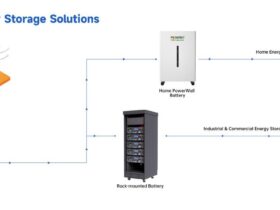As businesses continue to operate in an ever-changing digital world, the need for comprehensive quality assurance processes becomes increasingly important. Quality assurance (QA) involves assessing and verifying the quality of products and services that a company produces, which helps improve overall customer service and satisfaction. In this article, we will take a closer look at the role QA plays in successful companies today and explore how it can unlock new possibilities for your business’ efficiency.
What is Quality Assurance?
In order to maintain a good reputation and ensure customer satisfaction, businesses need to deliver quality products and services. Quality assurance services is a process that helps companies to achieve this goal.
Quality assurance involves creating a system that checks for defects or errors in products or services before they are delivered to customers. This process can help to identify problems early on so that they can be fixed before the product or service is released.
There are many different methods of quality assurance, such as inspections, testing, and audits. By using these methods, businesses can make sure that their products and services meet the required standards.
Implementing a quality assurance system can help businesses to improve their efficiency and bottom line. By catching errors early on, businesses can save time and money that would otherwise be spent on fixing them later down the line. Additionally, happy customers are more likely to become repeat customers, which can further boost a company’s bottom line.
Benefits of Quality Assurance
There are many benefits of having a quality assurance program in place for your business. Perhaps the most obvious benefit is that it can help to improve the overall quality of your products or services. Quality assurance can also help to identify potential problems early on, before they have a chance to cause major damage. Bycatch prevention and reduction is another big benefit; bycatch is defined as any marine life caught unintentionally while fishing for a different species. This often leads to the death of millions of animals each year, so bycatch prevention can have a significant positive impact on the environment. Quality assurance programs can also lead to increased efficiency and productivity in your business, as well as improved communication and coordination between team members.
How To Implement Quality Assurance In Your Business?
If you’re looking to implement quality assurance in your business, there are a few things you’ll need to do. First, identify what your customers expect from your product or service. This will help you determine what standards you need to meet. Once you have your standards set, put together a team of employees who will be responsible for making sure these standards are met. Train your team on the importance of quality assurance and how to go about their tasks. Finally, put systems in place to track progress and ensure that quality is maintained. By following these steps, you can implement quality assurance in your business and improve efficiency.
Types of Quality Assurance Tests
There are different types of quality assurance tests that businesses can use to improve efficiency. Here are four popular QA test types:
1. Black-box testing: This type of testing is based on the functionality of the software being tested. It doesn’t require knowledge of the internal structure or code of the software. Black-box Testing can be used to test individual functions or an entire application.
2. White-box testing: Also known as clear-box, glass-box, or structural testing, this method looks at the internal structure of the code being tested. White-box testers need a deep understanding of how the code works in order to test it effectively.
3. Unit testing: A unit is the smallest piece of code that can be independently tested. Unit tests focus on small pieces of functionality and ensure that they work as expected.
4. Integration testing: This type of testing checks how well different units work together. Integration tests are important for catching errors that could occur when units are combined.
The Process Behind Quality Assurance
The process behind quality assurance is simple: plan, do, check, and act. This four-step process helps ensure that the output of a process meets the requirements for quality.
The first step in quality assurance is to establish the parameters for what is considered acceptable quality. This can be done by creating quality standards or setting performance goals. Once these standards are established, it’s important to create a plan for how to achieve them. This plan will detail the steps necessary to produce a product or service that meets the established quality standards.
After the plan is in place, it’s time to put it into action. This involves carrying out the steps laid out in the plan and monitoring the results to see if they meet the standards for quality. If they don’t, it’s time to go back to the drawing board and figure out what went wrong and how to fix it. Once the process produces outputs that meet the standards, it’s important to continue monitoring and checking to ensure that quality is maintained over time.
Quality assurance is an ongoing process that requires careful planning and constant vigilance. By following these steps, businesses can ensure that their products and services meet customer expectations and contribute to overall efficiency.
How To Measure and Evaluate Results?
In order to effectively measure and evaluate results in quality assurance, it is important first to understand what quality assurance is and how it relates to business efficiency. Quality assurance is a process or set of procedures used to ensure that products or services meet certain standards of quality. In other words, it is a system designed to prevent or mitigate issues that could lead to poor-quality products or services.
There are many different facets to quality assurance, but most systems typically include some combination of the following:
Establishing clear quality standards against which products or services can be measured.
Creating procedures and protocols for testing products or services to ensure they meet standards.
Training employees on quality assurance procedures.
Implementing feedback loops so that issues can be identified and addressed quickly.
Monitoring systems and processes on an ongoing basis to identify opportunities for improvement.
The benefits of implementing a well-run quality assurance system are numerous. Perhaps most importantly, it can help businesses avoid the cost and disruption associated with releasing poor-quality products or services. Additionally, by catching errors and problems early on, businesses can save money on rework, corrections, and replacements. Furthermore, happy customers are more likely to become repeat customers, which can lead to increased sales and revenue over time. Finally, effective quality assurance can help businesses build a reputation for reliability and excellence, instilling confidence in both current and potential customers.
Alternatives to Quality Assurance
There are many alternatives to quality assurance, but not all of them are created equal. Here are a few of the most popular options:
1. Continuous Integration: Continuous integration is a development practice in which developers integrate their code changes into a shared repository several times a day. This practice allows for frequent feedback and can help prevent issues from going undetected for long periods of time.
2. Test-Driven Development: Test-driven development is a software development methodology in which tests are written before code is written. This approach can help ensure that the code meets the requirements set out by the tests.
3. Behaviour-Driven Development: Behaviour-driven development is an extension of test-driven development in which tests focus on the behavior of the system rather than on its implementation details. This approach can help produce more maintainable and robust software.
4. Quality Control: Quality control is a process in which products or services are inspected to ensure that they meet certain quality standards. Quality control can be used to identify defects and take corrective action to prevent them from entering the market or being delivered to customers.
5. Six Sigma: Six Sigma is a quality management methodology that aims to reduce defects by using statistical methods and data analysis. Six Sigma can be used in manufacturing as well as service industries and has been successfully implemented by companies such as Motorola and GE.”
Conclusion
Quality assurance is an integral part of any business’s success and should not be underestimated. Quality assurance ensures that the products being sold are of the highest standard and customers can have confidence in them. Having a quality management system or process in place allows businesses to identify issues quickly so they can take corrective measures before the problems become bigger and more costly to fix. Companies who invest their resources into efficient Quality Assurance processes will ultimately benefit from fewer complaints, fewer product returns, increased customer satisfaction, improved overall efficiency across their organization, and unlocking the secret to business efficiency goals.







